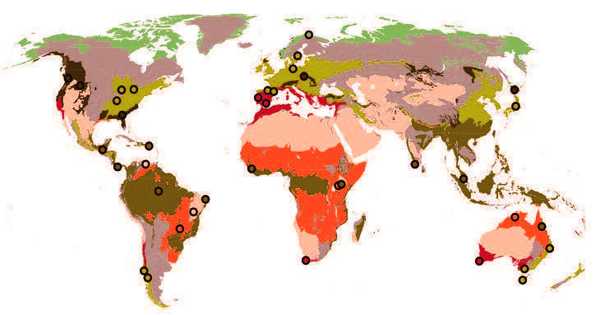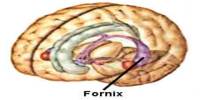Sphenoid Bone
Definition
Sphenoid bone is the large butterfly-shaped compound bone at the base of the skull, which containing a protective depression for the pituitary gland. The sphenoid bone has been called the ‘keystone’ of the cranial floor because it is in contact with all of the other cranial bones. The sphenoid bone is one of the seven bones that articulate to form the orbit. Its shape somewhat resembles that of a butterfly or bat with its wings extended.
The pituitary body itself is lodged in a cavity of the sphenoid bone called the pituitary fossa. This bone helps form the base of the cranium, the sides of the skull, and the floors and sides of the orbits (eye sockets). Along the middle, within the cranial cavity, a portion of the sphenoid bone rises up and forms a saddle-shaped mass called sella turcica (Turk’s saddle). The sphenoid bone also contains two sphenoidal sinuses, which lie side by side and are separated by a bony septum that projects downward into the nasal cavity.
The sphenoid bone of humans is homologous with a number of bones that are often separate in other animals, and have a somewhat complex arrangement.
Structure and Functions of Sphenoid Bone
The sphenoid bone is one of the eight bones that make up the cranium – the superior aspect of the skull that encloses and protects the brain. It is situated at the base of the skull in front of the temporals and basilar part of the occipital.
Body — The body, more or less cubical in shape, is hollowed out in its interior to form two large cavities, the sphenoidal air sinuses, which are separated from each other by a septum. The body articulates with the ethmoid bone anteriorly, and it is here that the sinuses open up into the nasal cavity.
The superior surface of the body presents in front a prominent spine, the ethmoidal spine, for articulation with the cribriform plate of the ethmoid; behind this is a smooth surface slightly raised in the middle line, and grooved on either side for the olfactory lobes of the brain. The posterior surface, quadrilateral in form, is joined, during infancy and adolescence, to the basilar part of the occipital bone by a plate of cartilage. Between the eighteenth and twenty-fifth years this becomes ossified, ossification commencing above and extending downward. The anterior surface of the body presents, in the middle line, a vertical crest, the sphenoidal crest, which articulates with the perpendicular plate of the ethmoid, and forms part of the septum of the nose.
Greater Wing – The greater wing extends from the sphenoid body in a lateral, superior and posterior direction. It contributes to three parts of the facial skeleton:
- Floor of the middle cranial fossa
- Lateral wall of the skull
- Posterolateral wall of the orbit
There are three foramina present in the greater wing – the foramen rotundum, foramen ovale and foramen spinosum. They conduct the maxillary nerve, mandibular nerve and middle meningeal vessels respectively.
Lesser Wing – The lesser wing arises from the anterior aspect of the sphenoid body in a superolateral direction. It separates the anterior cranial fossa from the middle cranial fossa. It also forms the lateral border of the optic canal – through which the optic nerve and ophthalmic artery travel to reach the eye. The medial border of the optic canal is formed by the body of the sphenoid.
There is a ‘slit-like’ gap between the lesser and greater wings of the sphenoid – the superior orbital fissure. Numerous structures pass through here to reach the bony orbit.
Pterygoid Processes — The pterygoid processes, one on either side, descend perpendicularly from the regions where the body and great wings unite. Each process consists of a medial and a lateral plate, the upper parts of which are fused anteriorly; a vertical sulcus, the pterygopalatine groove, descends on the front of the line of fusion. It consists of two parts:
- Medial Pterygoid Plate – supports the posterior opening of the nasal cavity.
- Lateral Pterygoid Plate – site of origin of the medial and lateral pterygoid muscles.
Articulations — The sphenoid articulates with twelve bones: four single, the vomer, ethmoid, frontal, and occipital; and four paired, the parietal, temporal, zygomatic, and palatine.
Ossification – The greater part of the bone is ossified in cartilage. There are fourteen centers in all, six for the presphenoid and eight for the postsphenoid.
Intrinsic Ligaments of the Sphenoid —The more important of these are: the pterygospinous, stretching between the spina angularis and the lateral pterygoid plate; the interclinoid, a fibrous process joining the anterior to the posterior clinoid process; and the caroticoclinoid, connecting the anterior to the middle clinoid process.
This bone assists with the formation of the base and the sides of the skull, and the floors and walls of the orbits. It is the site of attachment for most of the muscles of mastication. Many foramina and fissures are located in the sphenoid that carries nerves and blood vessels of the head and neck, such as the superior orbital fissure (with ophthalmic nerve), foramen rotundum (with maxillary nerve) and foramen ovale (with mandibular nerve).















